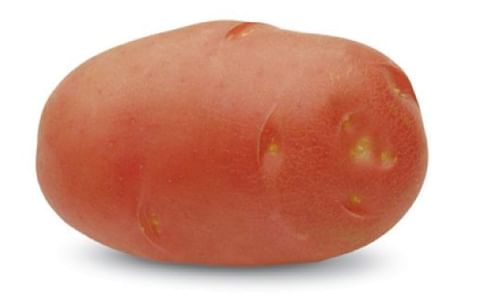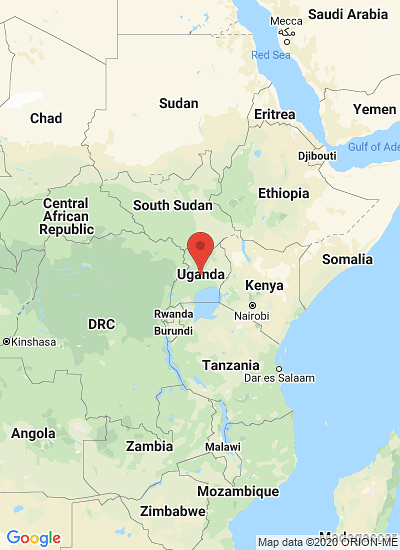Late blight resistant plants in the back grow while non-resistant varieties in the foreground die.
Uganda field trial shows extreme resistance to late blight by GM potato

In Uganda, about 300,000 smallholder households grow potatoes for their subsistence living and for income. Loss due to late blight can be up to 60% in Uganda forcing farmers to spray fungicides often up to 15 times to protect their crops. This represents between 10-25% of their revenue from potato. Recently, a new population of the pathogen is sweeping through Uganda that appears to be more difficult for farmers to manage. Hence, the pressure on farmers to grow resistant varieties is escalating.
A few resistant varieties exist but they are not the preferred varieties that farmers and consumers want. Moreover these resistant varieties still rely on the use of fungicide. However, a scientific breakthrough in 2003 changed the prospect for obtaining durable resistance to late blight disease. A resistance (R) gene was isolated from Solanum bulbocastanum, a wild relative of the potato found in Mexico, and shown to confer resistance to a broad spectrum of pathogen strains. Soon after the discovery more R genes were isolated paving the way to obtain durable resistance to late blight in potato using biotechnology. Today we use genetic engineering, transgenesis, more commonly known genetic modification (GM), to introduce 3 R genes with broad spectrum resistance from wild relatives of the potato into potato varieties preferred by farmers and consumers alike.
A series of field trials began in 2015 to assess whether these GM potatoes have durable resistance to late blight at the Kachwekano Zonal Agricultural Research and development Institute (KaZARDI) of the National Agricultural Research Organization (NARO) near Kabale in Uganda. Twelve highly resistant GM plants of the ‘Desiree’ and local ‘Victoria’ variety provided by the International Potato Center CIP) have shown extreme levels of resistance compared to the non-GM plants of the same varieties. In the confined field trials no fungicide spray was used and after only six weeks all of the non-GM varieties had completely died while all GM potatoes remained unaffected. This first observation of resistance to late blight in the field marks an important milestone in the development and future deployment of biotech potato varieties to farmers in Africa that will reduce losses and reduce cost of production significantly.
Late blight disease is well-known for its devastating impact on potato in the 1840s that caused the Irish famine leading to 1.5 million deaths in Ireland and likely more deaths on the European continent. Since then, this disease has been responsible for production losses and high cost of fungicides almost everywhere the potato is grown. Fungicide applications, crop losses, premature harvests, post-harvest losses including quality losses, have been estimated to be around 4.8 billion euros globally.









